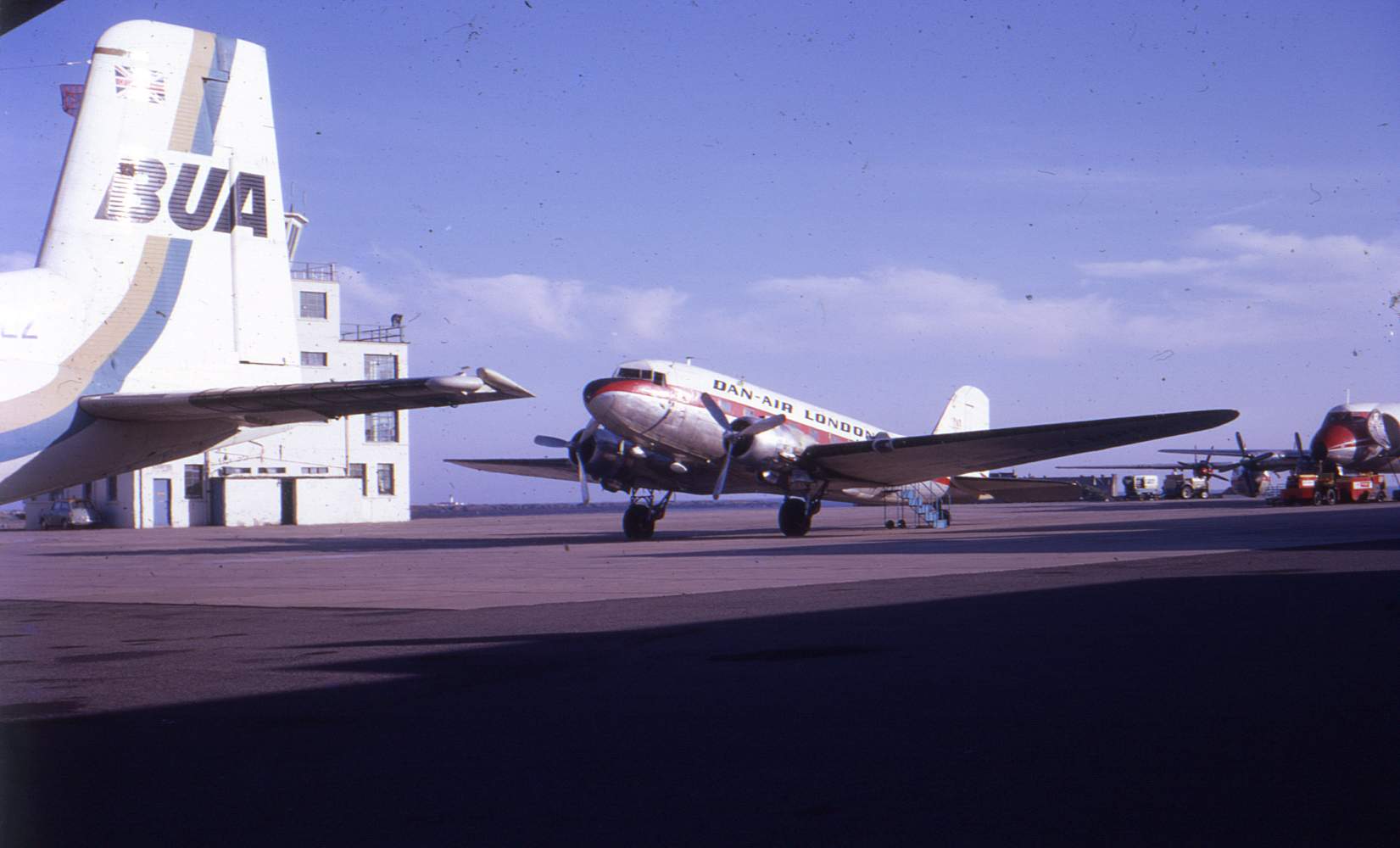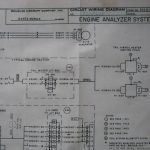Visiting Stansted Airport in the 1970s was a very different experience from today. It was little more than a long runway with a few hangers and Nissen hut office buildings (1). The terminal was a large shed with a grass viewing enclosure at one end; aircraft movements were often few and far between. Accordingly, my visits to Stansted were less frequent than to the constantly-busy airport scene at Southend……. until I discovered the dark side of the airfield! Friends had often mentioned exotic and unusual aircraft at Stansted but, after nosing around the Civil Aviation Flying Unit hangar, Standard Telephone and Cables DC-3 hangar and the Gulfstreams of the Ford Motor Company, I seemed to have exhausted the airfield’s delights. Then I travelled down the B183 that led from Takely village to the eastern edge of the airfield. Ironically, this back road now leads straight into the main passenger terminal. In the early seventies it was a quiet road which suddenly gave and amazing view of the Fire Service Training School compound and the Aviation Traders (Engineering) hangar. The first time I visited, the Fire School had an Air Links Argonaut, a Dragonfly helicopter and an early Comet. From memory, the burning ground contained a Hastings, the remains of a Varsity and (possibly) a Shackleton.
(1). Originally built during the latter part of WW2 by the US 817th Battalion of Engineers, Stansted was used by USAAF 8th and 9th Air Forces from Spring 1944 until August 1945. The runway was lengthened in the mid-fifties by the US 803rd Engineer Aviation Battalion in anticipation of NATO use and was, at the time, the longest in Britain. Stansted remains on lease to the USAF until 2041 (Stansted Airport Through Time, Charles Woodley).
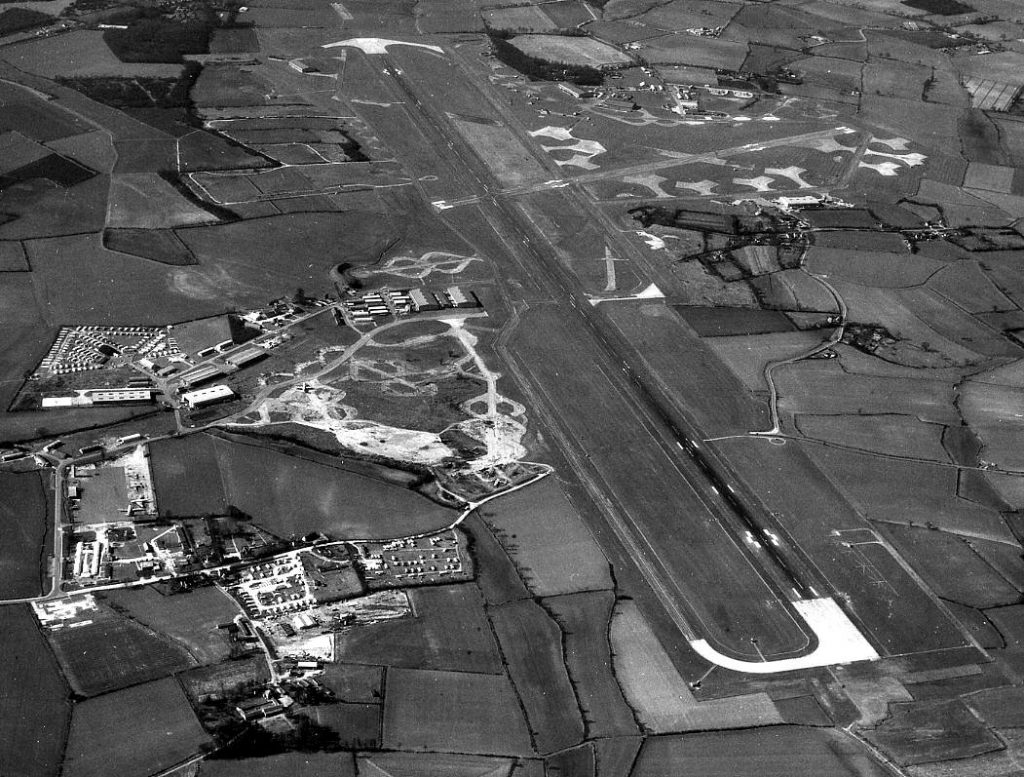
Aircraft came and went over the years, most disappearing in a cloud of pungent black smoke but, for me, the definitive era was when the two ex-Trans-World Leasing DC-7s were parked in the compound. They had been acquired by Mike Keegan’s organisation from Martinair Holland and were initially believed to be for resale. PH-DSO arrived at Stansted first, on October 1st 1968. She had never operated in Biafra and was still in Martinair’s striped red and blue colours.
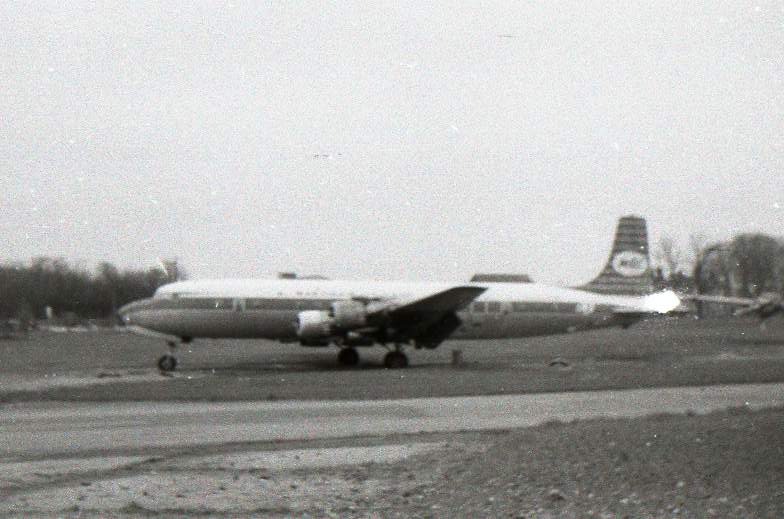
PH-DSL arrived at Transmeridian Air Cargo a couple of months later on December 19th 1968, flying-in from Schiphol. ‘DSL had been part of the International Red Cross (IRC) airlift and was painted in their all-white finish. She had arrived at Fernando Poo on 6th September 1968 (2), staging south via Palermo, and operated only very briefly on the air bridge, returning to Amsterdam on 26th October 1968. The DC-7C had been chartered from Martinair by the Dutch Red Cross and formed part of the six strong IRC ‘International Air Lift West Africa’ fleet. This had been promoted by Transair Sweden’s Count Gustav von Rosen as a way of delivering humanitarian supplies without the participation of the American gun runner Hank Warton.
PH-DSL made her first flight from Fernando Poo to Biafra on the night of September 11th/ 12th 1968 with a delivery to the breakaway State’s Uli airstrip. At the time, Uli was believed to be under threat from besieging Federal forces and flights were halted from 12th to 15th September. Consequently, PH-DSL’s next mission, on the night of 13th/ 14th, was to the alternative airstrip at Obilagu with milk powder, lentils and medical supplies. Obilagu had just been opened in early September 1968 and was supposed to be for the exclusive use of the IRC. It had even less facilities than Uli but the Biafran forces demanded that their arms flights should also be able to use the runway as required. Eventually, it was Obilagu which was overwhelmed by the Federal forces on 23rd September, and PH-DSL’s remaining operations were to Uli which remained in Biafran hands until the very end of the war.
Returning to Europe at the end of October 1968, PH-DSL’s time on the humanitarian airlift was over. Martinair replaced her with DC-6A PH-MAM as the Six was considered to be a more robust aircraft than the larger DC-7. Indeed, at this time, DC-7s were gradually being phased-out of the operations of the more established independent airlines such as Martinair as the jet age took over.
(2) Almost all detail on the Biafran Airlift is from Michael Draper’s excellent book ‘Shadows’, the definitive text on the Biafran War, published by Hikoki Publications in 1999. A picture of PH-DSL at Fernando Poo, taken by Michael Draper, appears on page 146.
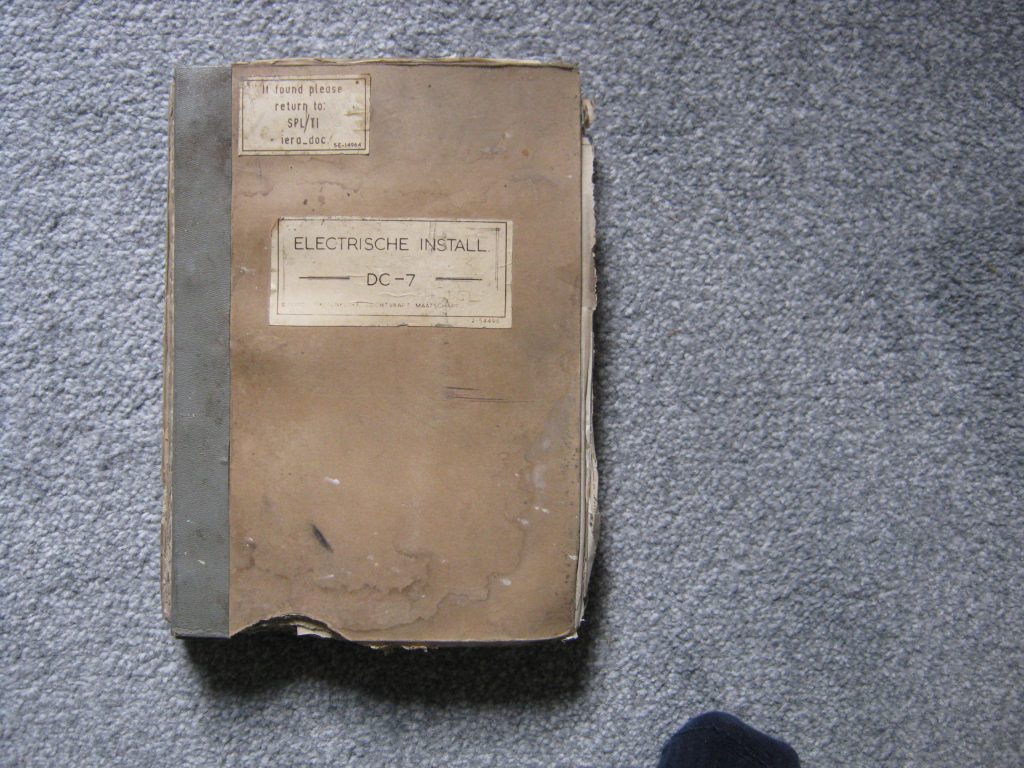
PH-DSO and PH-DSL had both started life in KLMs prestigious DC-7 ‘Seven Seas’ fleet of the late 1950s. Immediately post war, KLM had recommenced long-rage services with C-54s and DC-4s and was at the front of the queue of European airlines re-establishing air links with the USA. Constellations and DC-7s followed as the airline upgraded to what proved to be the last and most-sophisticated phase of piston-engine operations.
PH-DSL, serial number 45180, was the first of the ‘Seven Seas’ delivered to the airline and was originally due to become PH-DSA with the name ‘Witte Zee’. Instead, she was officially received as PH-DSL Oostzee (Baltic Sea) on 7th April 1957. The first batch of ten DC-7Cs for KLM was followed towards the end of 1958 by a second batch of five aircraft of which PH-DSO ‘Bering Zee’ was the third. DSO was delivered on 28th October 1958. Although the DC-7s did enable long range operations, their performance didn’t quite live up to expectations. Nonetheless, KLM was able to commence ‘over the Pole’ great circle routes between Amsterdam and Tokyo and other inter-continental services (3). Their service life remained quite short and conversion of some passenger aircraft to DC-7CFs had commenced by 1960 (4). The disposal of the remaining passenger DC-7Cs commenced in 1964 with four aircraft sold to Martinair: PH-DSC, DSK, DSL and DSO.
(3). KLM pilots were issued with Dutch assault rifles to repel Polar Bears should a forced landing be required on the ice cap.
(4) The DC-7C could only just fly the New York to London sector non-stop and was often obliged to refuel at Gander or Shannon.
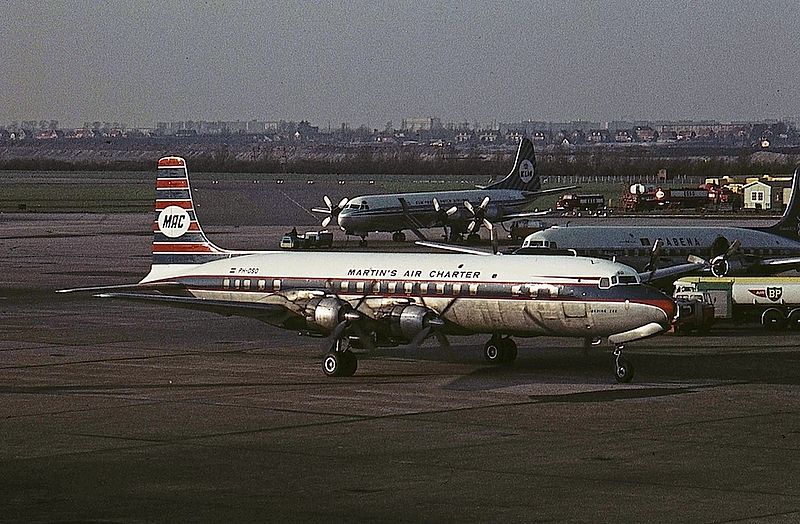
PH-DSO was delivered to Martinair on March 1st 1964 and PH-DSL later in the year on November 1st. They became frequent visitors to the UK during the mid 1960s between longer-range operations (5).
Martinair had grown from a small concern towing advertising banners with Harvards in the early 1950 (8). Martin Schroder expanded via sightseeing flights and ad hoc charter flights and, by early 1960, Martin’s Air Charter had purchased its first DC-3, PH-MAB. Two years later, the Boreas Corporation sold them their first 4-engine airline, C-54 PH-MAE, and this was followed in 1964 by PH-DSO from KLM. The DC-7C gave new range to Martin’s operations with passenger charter work to the USA, Canada and Southern Africa possible. Indeed, PH-DSO was also occasionally chartered to Sabena for flights to the Belgian Congo. Lloyd International also made use of PH-DSO for holiday flights between Glasgow and Mediterranean destinations. PH-DSL joined the fleet in November 1964 from KLM and the Dutch national carrier took a 25% interest in Martin’s Air Charter. A third DC-7C, PH-DSC, joined the airline in May 1965 and charters stretched as far afield as Johannesburg and Vancouver. In March 1966, PH-DSO became the first passenger charter aircraft to fly over the North Pole when she operated an Amsterdam to Tokyo service. During the summer of 1966, PH-DSL flew services to the West Indies and the Azores while PH-DSO operated on the North Atlantic route and also with Aer Lingus. When the DC-7s ‘retired’ to the Stansted Fire School in 1968, a large amount of paperwork remained on board PH-DSO and documented this busy schedule (6).
(5) PH-DSL was noted at Aldergrove on 3rd November 1965 inbound from Amsterdam; PH-DSO was at Aldergrove on 3/9/1965 and Shannon on 8/8/1968 (Air Britain and LAAS journals).
(6) As PH-DSL had been in Africa, it seems likely that it was PH-DSO which carried all the miscellaneous paperwork. The manuals, however, seem to be for PH-DSL. The details from the logs were copied-out on discarded Transmeridian (Sales) notepaper and the basics have been transferred to the spreadsheet below.
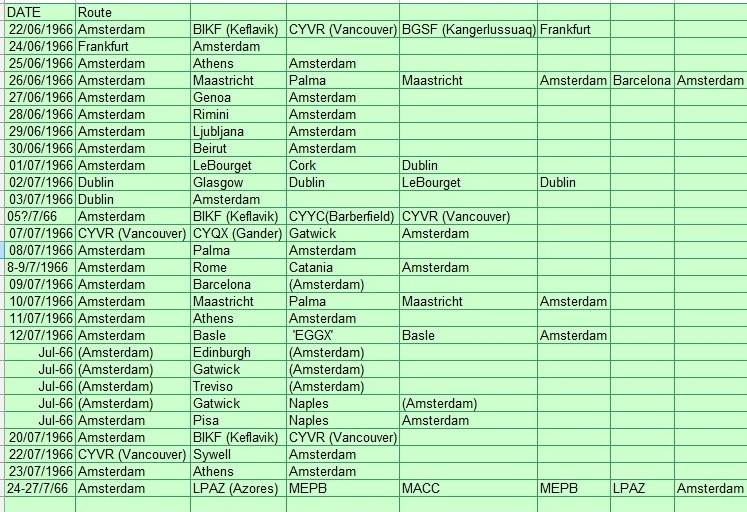
PH-DSO and PH-DSL also joined the ‘Ajax Armada’ to a foggy Liverpool on December 14th 1966 for the European Cup tie (7).
(7) Four DC-7s flew to Liverpool for the 1966 European Cup ties between LFC and Ajax. Two were from Schreiner, two from Martinair and they were accompanied by Transavia’s DC-6 PH-TRC, DC-3s, a DC-8 and a Britannia. From: http://derbosoft.proboards.com/thread/23364/years-ago-ajax-1966-images North West
The following summer, PH-DSO was again operating long-haul charters to the USA in August while PH-DSL was noted operating Curacao to London Gatwick in December 1967 (8). Both PH-DSC and DSL operated passenger charters between Khartoum and Gatwick in February 1968 and long-distance operations were flown between Amsterdam and South Africa, the Far East and North America. Later in 1968, PH-DSL positioned from Amsterdam to Santa Isabel with a volunteer flight and maintenance team to join the Red Cross operation in Biafra. PH-DSO was logged at Shannon on 8th August 1968. She may have been on one of her last trans-Atlantic missions as, the following month, PH-DSO was sold to Martinair’s long-term associate, Mike Keegan and delivered to Transmeridian at Stansted on October 1st. PH-DSL arrived to join PH-DSO at Stansted on December 19th 1968 and, initially, both aircraft were believed to be destined for resale. By the following October both the Sevens were looking neglected at dispersal near Stansted’s Aviation Traders and Transmeridian hangers. They remained there for years, rather than months, with PH-DSL noted in Spring 1971 parked-up with engines protected by plastic sheeting inside the cowlings/ nacelles. PH-DSO was used in an ‘All Airport’ training exercise during 1971 but, even during 1972, was still used by Transmeridian as a bit of a storeroom. When I visited in August 1972, she was carrying a good selection of old gyrocompasses, fuel gauges, radio equipment, engine cylinders, prop spinners, seats and panels. The cockpit still held 30 plus instruments as well as radio and auto pilot equipment.
(8) Much of the Martinair information is from Fernand van de Plas’s excellent 2-part article on the airline in Propliner editions #110 and #112.
The two DC-7s were eventually moved into the Fire School compound during 1971 where they made an impressive site. They were the main resource for non-destructive (and slightly destructive) training exercises over the next few years and can be seen in Alan Pratt’s Flikr file photos (below) which seem to illustrate an exercise being run for the benefit of the press and local luminaries.
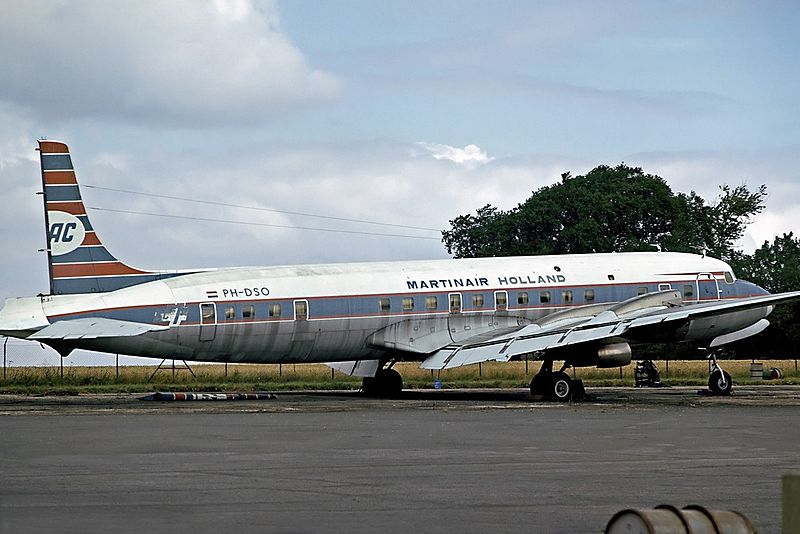
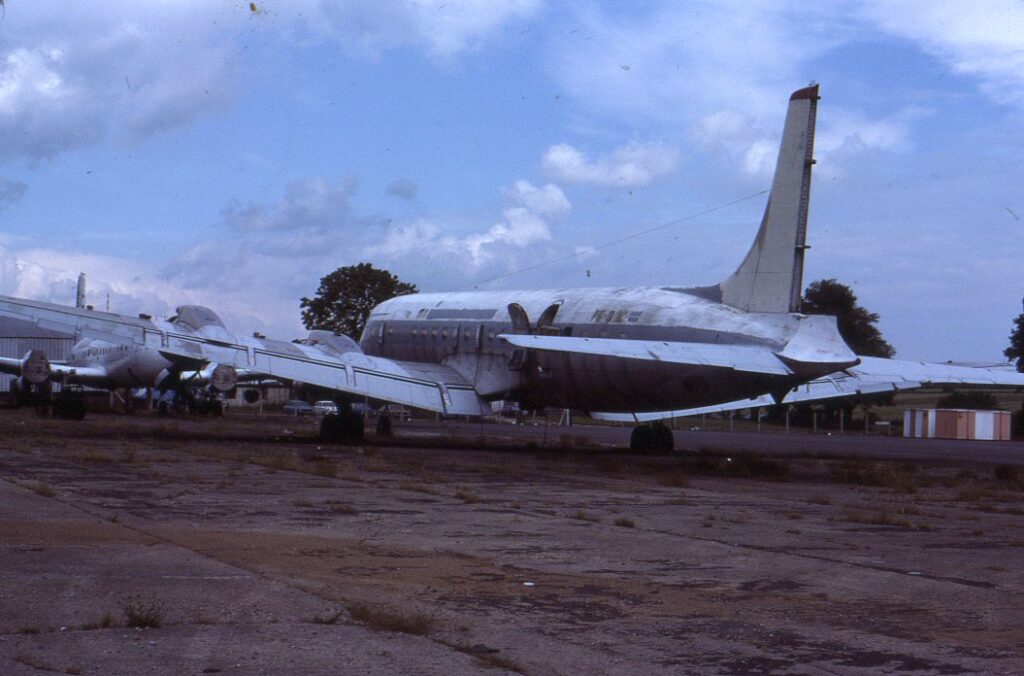
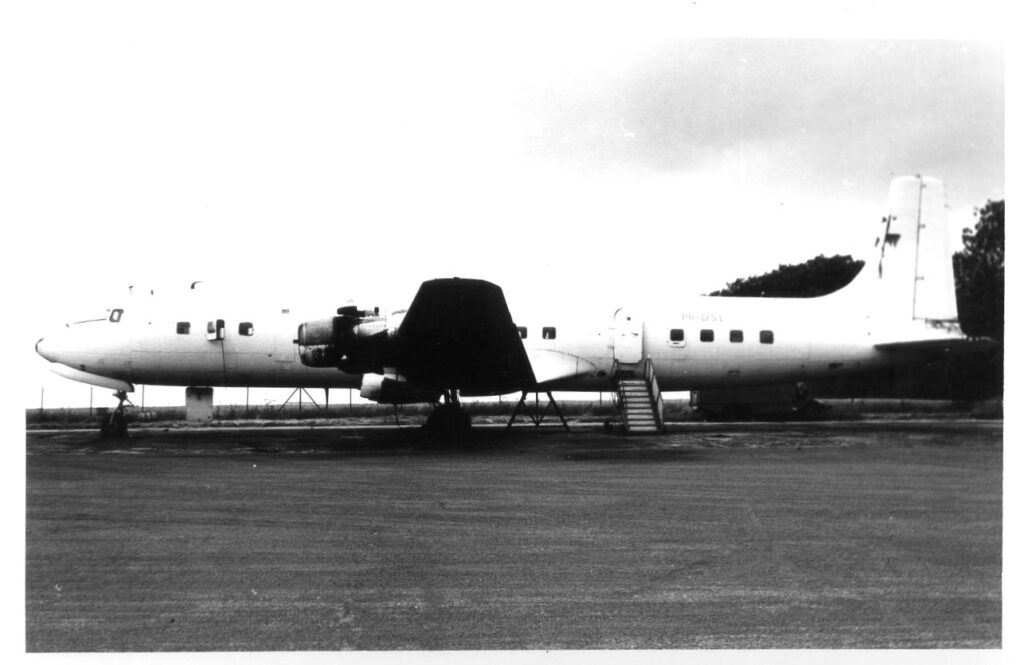
The two Sevens remained in reasonable although tatty condition right through until the (very) early 1980s. The Fire School then moved prior to the expansion of Stansted as London’s third airport. The FSTS classroom facilities departed for Moreton-in-the-Marsh and the practical side was relocated to Teesside International Airport. The two DC-7Cs were cut-up for scrap along with many of the other resident aircraft.
Hits: 883
